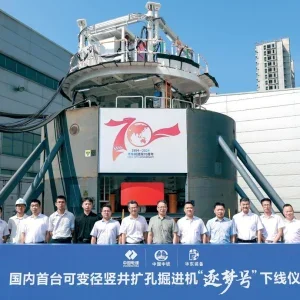A very long TBM tunnel is currently under construction, bored mostly through fairly homogeneous mudstone with a maximum 390m overburden. The tunnel will house the conveyor (or Mineral Transport System) that will take polyhalite from mine to port. At 37.1km, it is longer than the previous record-holder for the longest TBM drive for a mine: the 13.5km road at the 1980s Selby Coal mine in the UK. So Woodsmith is clearly a standout example of a TBM used for mining.
However, the application of TBMs in mining, compared to civil applications (over 10,000 TBMs used to date), cannot be said to have been hugely successful. Indeed, only around 230km of TBM-bored tunnels have been built by the mining sector globally, compared to the thousands of kilometres completed for civil applications. There is good reason for this and it is mainly geological.
Tunnelling in deep ore deposits presents more difficult and complex conditions for a TBM than the shallower mining typically associated with civil applications. A coal mine may present problems of methane, weak ground and water inflows. Other mines present tougher ground conditions – the complex geologies associated with deep, hard rock mines. In such conditions, a TBM may experience various setbacks, such as steering problems, cutter wear and jamming. Aside from geology, other factors include the difficulty of mines to undertake thorough pre-tunnelling geological investigations, and the challenging logistics associated with the depth.
But times are changing. Continuous development of TBM technology, especially over the past 15 years, allows them to be adapted quickly to changing ground conditions. Some have therefore predicted that we will see a greater use of these machines in the mining sector. This will come at a critical time as ore deposits on or near the surface become depleted, necessitating access to deeper and more remote ore bodies – which will therefore mean more and longer tunnels.
When the tunnel length is economical and ground conditions are favourable, TBM tunnelling has some advantages over conventional drill and blast – typically lower risk and higher advance rates; lower costs in some cases. But to rise to the occasion, the mining industry must recruit the experienced, skilled workforce required for TBM operations. This may take time, but it may have no other choice in the circumstances.






